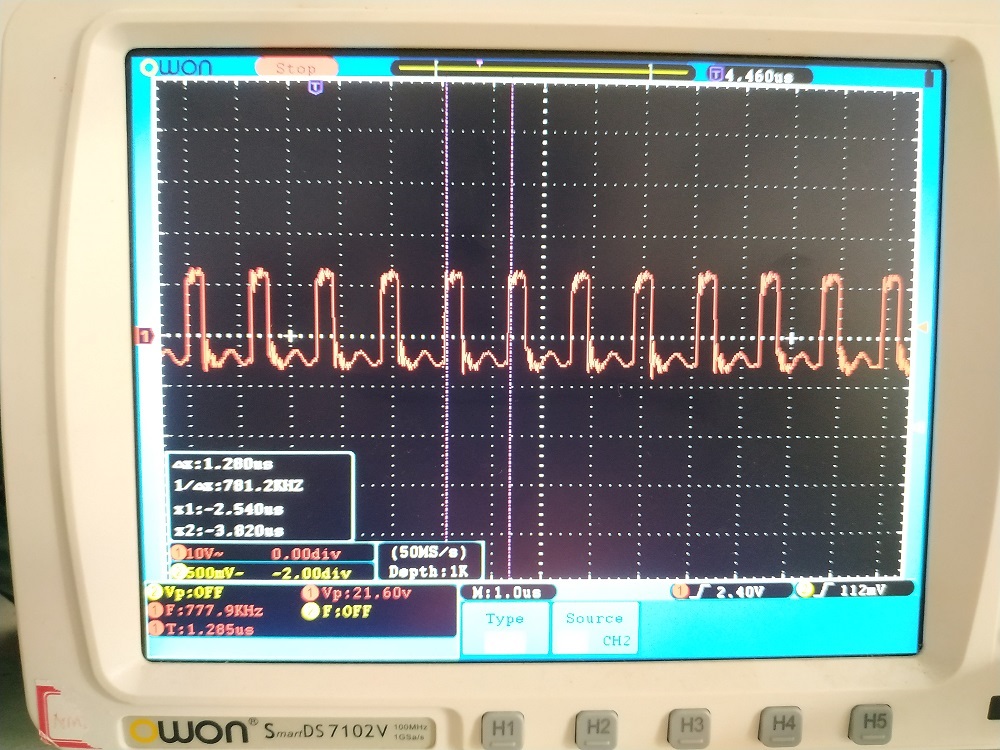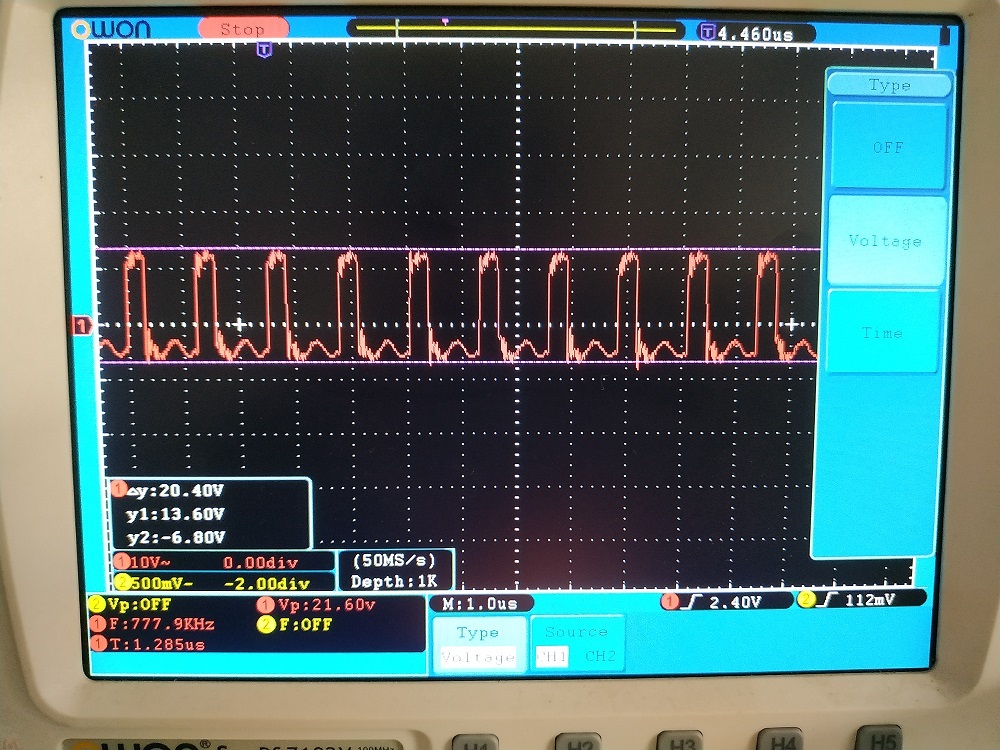Hello,
We have developed a charger for 4s battery pack using BQ25713RSNR.The charge current is 2A max with switching frequency of 800kHz.During the operation the inductor is heating to 70C-80C. After review we have considered the following changes.
System setup:
input:12V output:16.4V charging current:2Amax
- Inductor with lesser Rdc and higher Isat
inductor in current design:
PN: BWVS008080402R2M00 Rdc:11.5mohms+-30% Isat:9.2A
Inductor ripple current waveforms picture is provided in the attachment
- thermal vias for switching mosfets.
- mosfets with lower Qg and Rdson,
mosfet in current design:
PN: RQ3E100BNTB having Qg=22nC and Rdson:10.4mohms
Kindly review and let us know if we have missed any keypoint for the thermal optimization.
Attachments:
1)schematic
2)PCB layout screenshot with power path
3) voltage waveforms obtained from inductor terminal: inductor current at 2A




